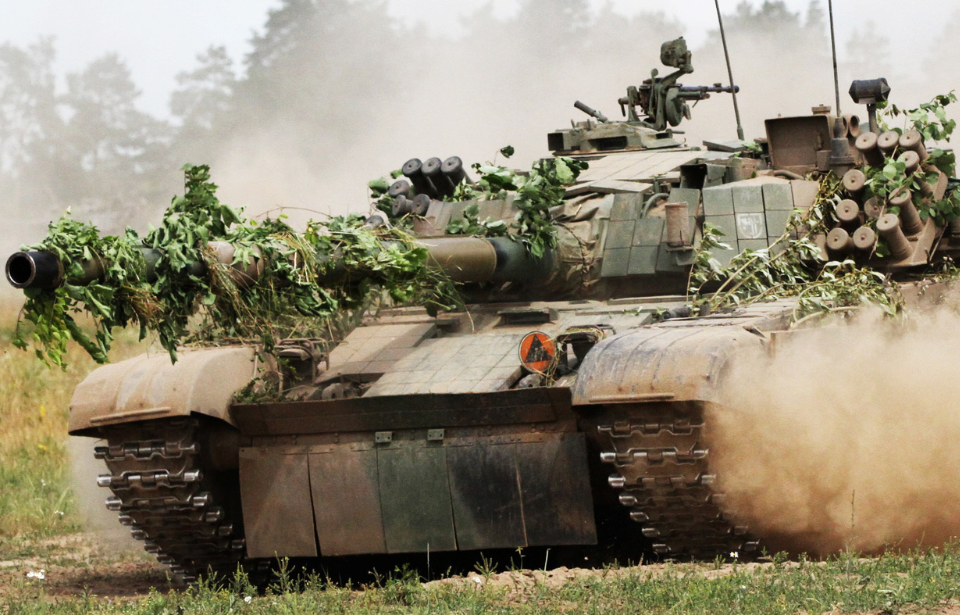When you think of European military powers, Poland might not be one of the first to come to mind – but it should. The country’s armed forces equip a host of powerful tanks, most notably the PT-91 Twardy. Arising from a desire to modernize the Cold War-era T-72, it’s most recently been deployed to Ukraine, where it’s come face-to-face with the Russian forces.
Development of the PT-91 Twardy
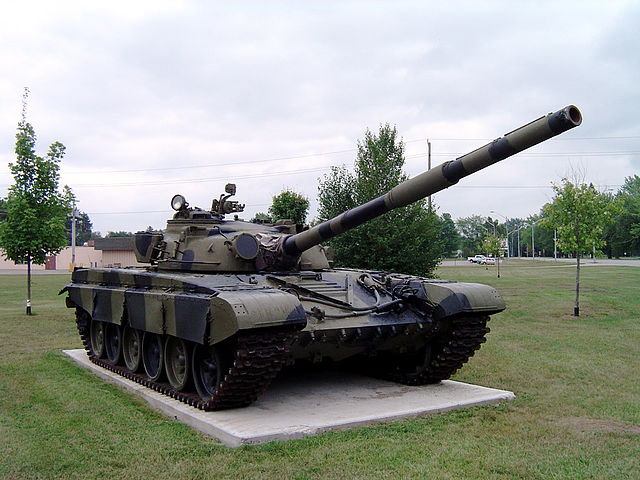
The PT-91 Twardy tank arose from a need to modernize Poland’s armored forces toward the end of the Cold War. As the conflict neared its conclusion, the Eastern European country looked into upgrading its T-72s, in the hopes of extending their service lives and enhancing their combat effectiveness.
Engineers at OBRUM, working under Bumar-Łabędy, spearheaded the PT-91’s development. Initially, efforts faced challenges, including deliberations over the other option of acquiring newer Soviet tanks, like the T-80. However, political shifts occurred, particularly the collapse of the Soviet Union, which propelled the project forward.
The PT-91 was designed to address what the T-72 lacked, including mobility and advanced armor and fire control systems. The introduction of ERAWA reactive armor significantly increased its defensive capabilities against High-Explosive Anti-Tank (HEAT) projectiles, while a new fire control system improved its overall targeting accuracy. The tank’s engine was upgraded to the more powerful S-12U diesel power plant, ensuring better performance on the battlefield.
In 1995, it officially entered service.
PT-91 Twardy specs.
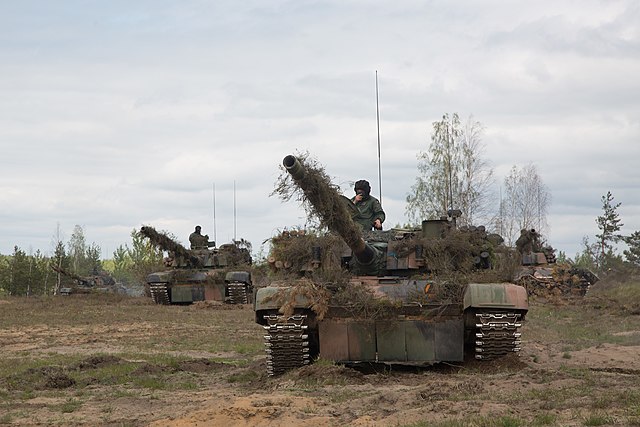
The PT-91 Twardy weighs 45.9 tonnes and is equipped with the same 125 mm 2A46 smoothbore gun as the T-72, affording it the ability to fire 42 rounds. Its secondary armament includes a 7.62 mm PKT coaxial machine gun and a 12.7 mm NSVT anti-aircraft machine gun, along with a thermal smoke device and 24 grenade launchers.
The tank’s protective coating is its standout feature, with composite armor enhanced by ERAWA-1 and -2 reactive armor. This layered protection greatly reduces the impact of HEAT projectiles and kinetic penetrators, ensuring the crew’s safety in hostile environments. However, it should be noted that it’s not as effective at protecting against 120 mm armor-piercing fin-stabalized discarding sabot (APFSDS) rounds fired from 2,000 meters.
Powered by the PZL-Wola S-12U diesel engine, the PT-91 can hit a maximum speed of 32 MPH. Its range sits around 404 miles, which can be increased to 435 miles with additional fuel tanks, ensuring sustained operations, when needed.
The PT-91 is equipped with advanced fire control systems, including the DRAWA fire control system, which integrates day and night sights, a ballistic computer and the Obra self-defense system, which deploys smoke grenades when the tank is targeted by lasers.
Noteworthy tank variants
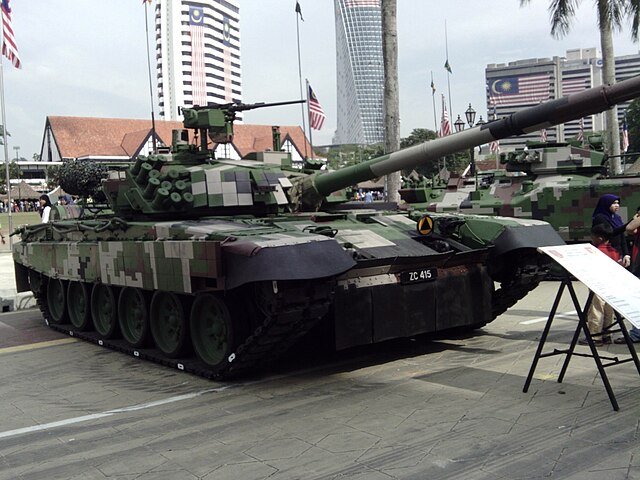
The PT-91 Twardy has spawned several variants, with each tailored to meet specific operational needs and export requirements. The PT-91A features the more powerful PZL-Wola S-1000 engine, enhancing its performance and reliability. This variant served as a testbed for further innovations and was showcased at military exhibitions.
The PT-91Z Hardy has an advanced iteration with the SAGEM Savan-15 fire control system, offering improved accuracy and gun stabilization. It influenced the development of the Malaysian export model, the PT-91M Pendekar, which has a 1,000 hp power-pack, a Renk automatic transmission and upgraded armaments, like a ZTS 2A46MS 125 mm gun, making it a competitive choice in the international market.
The PT-91E/Ex was a demonstrator for export. It underwent testing in Malaysia, proving its durability and effectiveness in a host of different terrains. The PT-91P, designed for the Peruvian market, offered a cost-effective alternative, but it wasn’t selected.
Operational history
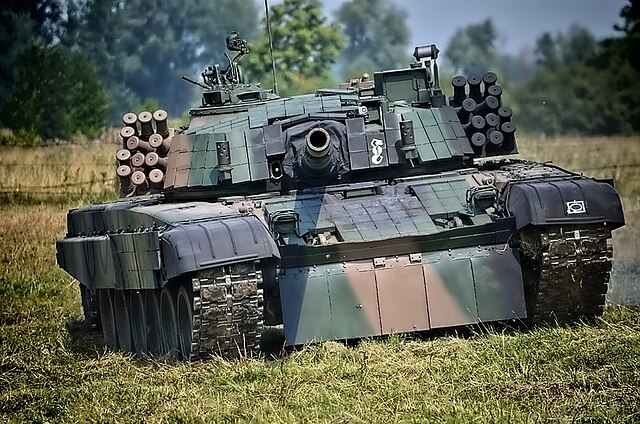
The PT-91 Twardy has played a noteworthy role in Poland’s military operations. Between 1995 and 2002, 233 were delivered to the country’s Land Forces and deployed with various units, like the 9 Brygada Kawalerii Pancernej and the 15 and 19 Brygada Zmechanizowana.
In addition to its domestic deployment, the PT-91 has seen international service, notably in Malaysia. The PT-91M Pendekar was delivered to the Malaysian Army between 2007 and ’09, alongside support vehicles and comprehensive training programs.
The PT-91’s operational history also includes collaborations with other nations, such as Georgia and India. Georgian T-72SIM-1s use the DRAWA-T fire control system, which was derived from the PT-91. India has incorporated elements of the tank into Ajeya Mk2s, including the PZL-Wola S-100 engine and the DRAWA-TE1 fire control system.
Deploying the PT-91 Twardy during the Russo-Ukrainian War
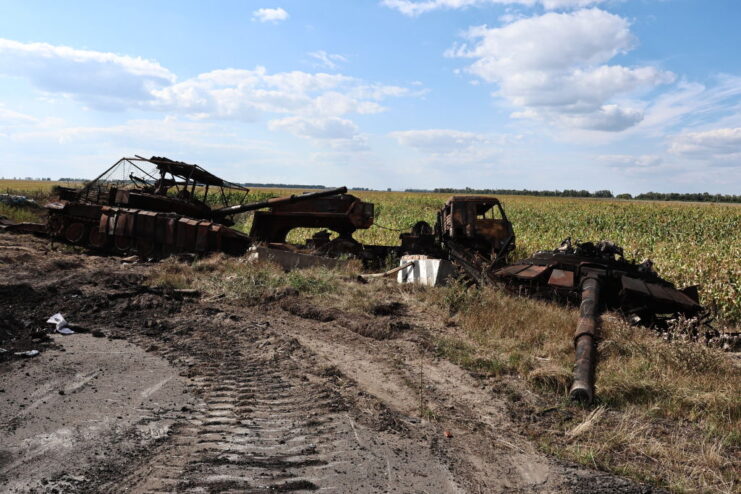
The PT-91 Twardy has recently gained attention for its use in the ongoing Russo-Ukrainian War. In April 2023, Poland delivered at least 30 to Ukraine, supporting the country’s counteroffensive against the Russian forces. They’ve been deployed as part of the 22nd Mechanized Brigade, a newly formed unit trained and equipped by Poland.
More from us: We Wouldn’t Want to Come Across These Main Battle Tanks (MBTs) in Combat
Want War History Online‘s content sent directly to your inbox? Sign up for our newsletter here!
Throughout the conflict, the PT-91 has shown its effectiveness and resilience. Its armor and fire control systems have provided the Ukrainian forces with a critical advantage on the battlefield. Despite the challenging conditions, the tank has more than proven its worth, with reports indicating its successful deployment in key operations, including the 2024 Kursk Offensive.
